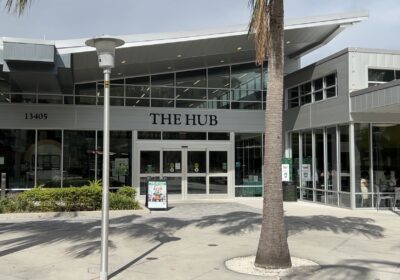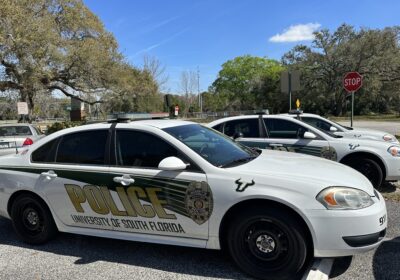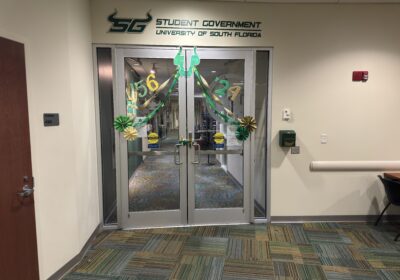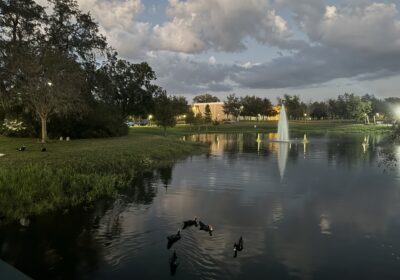USF staff sees potential decrease in rate of international students after election

USF currently hosts 4,726 international students and pushes for a global curriculum, but concerns over immigration laws may make the university’s global community smaller. ORACLE PHOTO/BREANNE WILLIAMS
Of the over one million international students studying at U.S. universities, 4,726 are USF students, according to enrollment data gathered by the provost office for Fall 2016.
With President-elect Donald Trump set to take his seat in the White House in January, some experts are concerned about changes he could make once in office that would discourage students coming to the U.S. to study.
A New York Times article reported that college admissions officials, while unable to draw a conclusion about overseas applications until the deadlines pass, are concerned that Trump’s presidency could cause a drop in the amount of students coming to the U.S. to study after reporters attended college fairs in several countries.
Jessica Brightman, Marketing and Communications Officer with USF World, said the department has had students come in with concerns over possible changes to immigration regulations, special registration for groups of people and general concern based on news reports.
“There have been no changes to immigration regulations,” she said. “These types of changes would take time since changes require complex legislative processes.
“Our office continually monitors immigration regulations that affect our students and scholars. If there are changes or proposed changes, we will inform students immediately and be available to answer any questions.”
On Nov. 14, System Vice President for USF World Roger Brindley sent out a letter to all international students encouraging those who are concerned about current affairs to go to administrators with USF World, International Services or INTO USF for guidance.
Glen Besterfield, International Admissions Director with INTO USF, said to properly look at the possibility of seeing fewer international students coming to the U.S., it’s important to understand why they’re coming in the first place.
Typically, students study abroad to receive what is perceived to be a better education than they could get in their home country, for the experience of studying in another country, or to get some work experience, Besterfield said. And each country is different.
“Honestly, most of the Chinese students I meet have no intention of staying in America,” he said. “They come to America to get the best education in the world and to get a different education than they might have gotten in China … get a different perspective on life so they can take that back to China … because that American degree is worth so much money to them.”
Looking at the political climate over the past eight months, Besterfield said the U.S. is more likely to see a decrease in students from some regions than from others.
“Whether it be in the rhetoric over the past eight months or what happens in the future with immigration law, I don’t think it’ll affect China,” Besterfield said. “I do think it’ll affect other countries of the world. Specifically, I think it’ll affect the Middle Eastern countries.”
Besterfield said the rhetoric about Muslims over the past months likely frightened people in the Middle East, but there were already signs that fewer students from the Middle East were likely to travel to the U.S. to study. He said some signs include the drop in the price of oil and government sponsorships coming out of the Middle East.
“Although that rhetoric was toned down in October and toned down more since the election, it really doesn’t matter that it was toned down. It’s already going to have an impact on potential students coming from the Middle East to study in America,” he said.
“With that said, even before the last eight months we knew less and less Middle Eastern students were going to come study in America.”
Besterfield said he’s not concerned about students coming from Europe or Latin American — although comments about building a wall could have a slight impact — being deterred from coming to the U.S. However, he thinks students from India are likely to be affected.
“Many Indian students want not only the great education, they come typically as a graduate student. They’re coming for that two-year master’s degree in engineering,” he said. “They’re hoping to get to optional practical training for two or three years in America and work with an engineering or Microsoft firm depending on their degree. I think that is a region of the world that could be impacted.”
According to Besterfield, about 18 percent of USF’s international students come from China and about 20 percent from India, which is below the national average.
“You’re always worried about what if immigration laws change, what about changes in world events, what if the world economy crashes and students don’t have the money to study abroad?” he said. “But what you’re trying to do is you’re trying to minimize your risk, so you’re trying to diversify your student body as much as possible. I think we’ve done that phenomenally well at USF.
“I’m trying to paint a rosy picture because I’m trying to look at it that way,” Besterfield said. “With that said, I think there’s going to be a lot of uncertainty until things calm down.”






